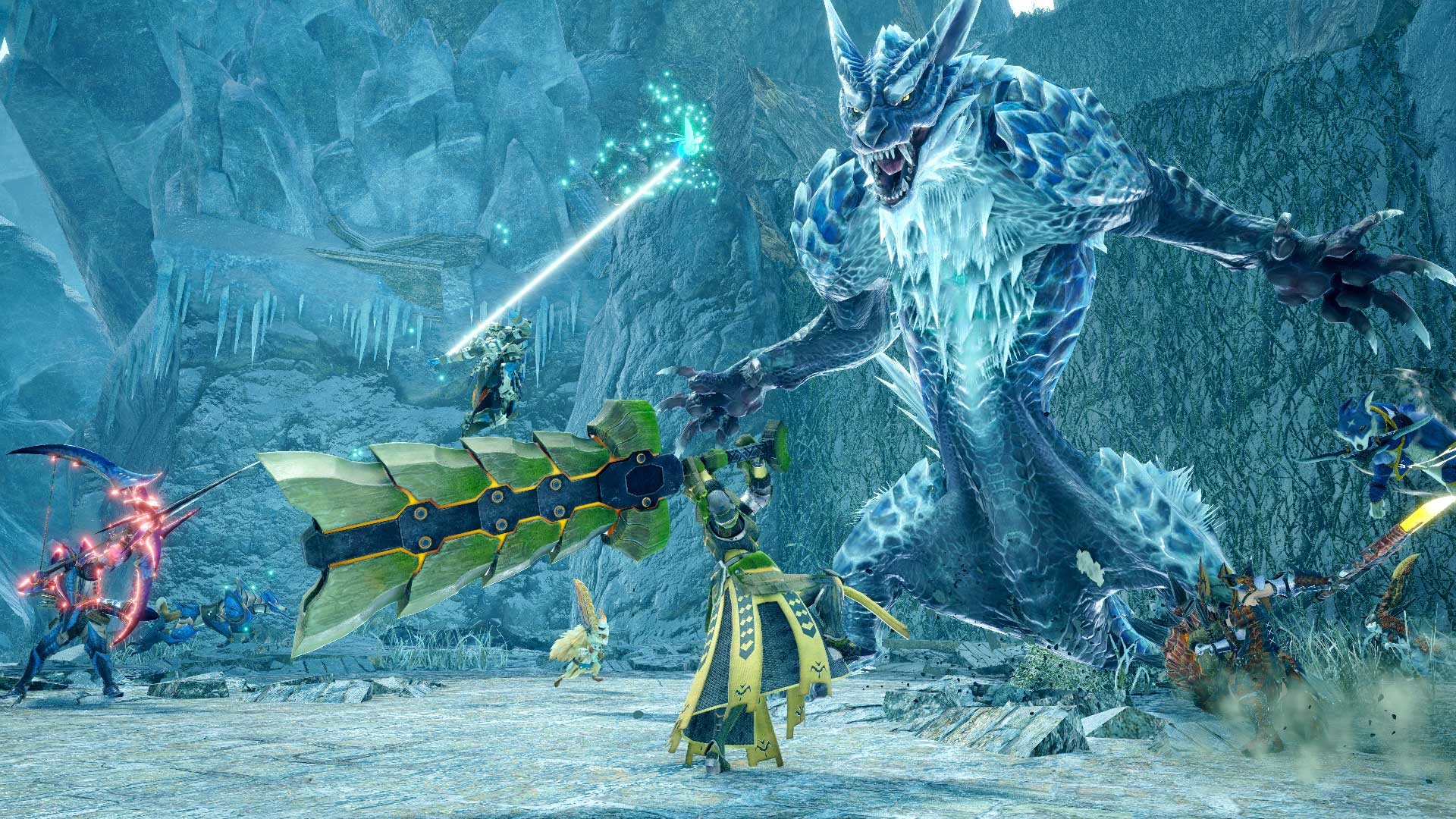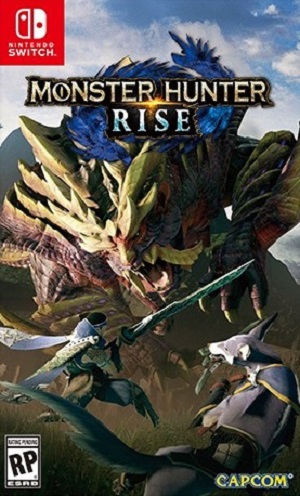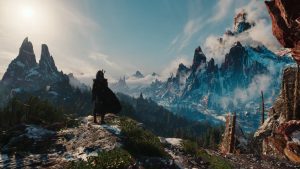
With notable entries such as Monster Hunter World and Rise, updates, and expansions to their names, it’s easy to say that Monster Hunter has found its audience. As an action heavy role-playing adventure, the game focuses on player-created characters who are hunters that travel out into the far reaches of a fantasy land for the sake of bringing down ravenous monsters that roam in the wild. It doesn’t get much simpler than that, and Monster Hunter Rise and its expansion, Sunbreak, carry on the tradition of battling gnarly beasts.
Rise brings a few new elements to the gameplay loop that ultimately aid in overworld traversal. Now, hunters have the companionship of a Palamute which can be ridden for faster travel as well as the use of wire bugs both for quick evade maneuvers, scaling terrain, and even attacks. For the most part, however, Monster Hunter Rise isn’t a far cry from its predecessor Monster Hunter World.
"Even though Sunbreak is a continuation, there is this notable “break” between Rise and the expansion that makes me wonder why the developer couldn’t have made Sunbreak easier to access without requiring a full playthrough of Rise first."
Rise’s expansion has been bought over to current and last gen consoles. Our focus here is the PlayStation 5 version. So, how does it perform? Let’s begin with the basics. Sunbreak takes the foundation of Rise and quite literally extends it, for better or worse. Monster Hunter Rise truthfully only caters to a specific audience. If engaging in the uphill “grind” isn’t your jam, Monster Hunter Rise is likely not for you. After all, there’s an ever-revolving door of challenges and hunts that all feel very similar even if the difficulty has been varied. Sunbreak adds more of the same and can be a detriment to those who tend to suffer from repetition burnout. The expansion even begins by having you hunt monsters you’ve already crossed paths with in Rise likely a number of times.
From the get-go, Sunbreak isn’t segregated from the Monster Hunter Rise in any fashion. You must quite literally complete the core storyline of Monster Hunter Rise by completing all required seven-star Hub quests. Rise isn’t a short game. Fans who wish to try Sunbreak must be committed. After completing the final hub mission, you can speak to a newly designated NPC in Kamura village which leads you to the first quest of Sunbreak, combating a new monster in the Shrine region. Once that mission is complete, you will then travel to Elgado, an entirely new outpost and kingdom complete with its own princess who will have new quests ready for you. There you will aid the people of Elgado in their fight against three monsters that ravage the land. But first, you must slay a bunch of other monsters because – why not?
Jumping into Sunbreak, while a continuation of Rise, feels functionally like a hard reset of sorts. Forget your hub rank. That is beneath you now. You’re setting your sights on Master Rank which effectively forces you into working your tail off for new gear. You’ll also have to familiarize yourself with the new layout of your home base. There’s certainly no shortage of things to do and fetch quests at hand for crafting the gear you want. Even though Sunbreak is a continuation, there is this notable “break” between Rise and the expansion that makes me wonder why the developer couldn’t have made Sunbreak easier to access without requiring a full playthrough of Rise first.
"Follower Collab Quests will become available shortly after the start of the expansion which enable NPCs to join you on hunting quests. It’s a rather neat feature that’ll allow you to see some of the characters you converse with regularly in Elgado in action."
Sunbreak expands gear upgrades with new silk-binding and weapon actions across all categories. Furthermore, you can now swap between skill loadouts with a simple button combination. During battle, the button actions are now detailed at the bottom of the screen to keep your memory fresh on what to press for which action. That is a welcome addition considering Monster Hunter Rise is famous for utilizing countless unconventional controls for its various functions. It’s just one more element that aids accessibility to newcomers. Despite these welcome additions, Sunbreak does little to innovate the existing gameplay loop. Hunts really are just more of the same.
One of the more thrilling aspects of Monster Hunter Rise is the co-op action. There’s nothing quite like teaming up with your pals or even a few random hunters and heading after the target with your torches and pitchforks. However, in the interest of full disclosure, I did not have the pleasure of engaging in multiplayer bouts during my time with Sunbreak – at least not yet. That, of course, was not for lack of trying considering the pre-release numbers were likely minimal at best. Still, for those who prefer to strike it out on their own, Sunbreak does inject a pseudo-multiplayer component you can still partake in. Follower Collab Quests will become available shortly after the start of the expansion which enable NPCs to join you on hunting quests. It’s a rather neat feature that’ll allow you to see some of the characters you converse with regularly in Elgado in action.
Sunbreak also comes with a cool new spectrum of monsters. Though, you’ll find yourself grinding out the first couple of Master Ranks before even really seeing any of them. Aside from the “The Three Lords” who act as pivotal boss fights, there is a handful of new additions to the average monster roster. Some of these monsters are just palette swaps of already-existing enemies. For instance, the Blood Orange Bishaten is quite literally an orange-colored version of the Bishaten. Though, make no mistake. He is far more formidable with devastating fiery attacks that will sweep you off your feet if you’re not careful.
Fans of Rise will notice there is one notable absence with Sunbreak. That is the real-time strategy missions players knew as Rampage quests. Hunters would have to fortify positions with artillery of different magnitudes to bring down hordes of monsters before they crashed through the walls of Kamura village. It was a welcome change of pace from the usual monster-hunting grind. However, it must not have received high praise as this style of quest has been abandoned in Sunbreak.
"As an expansion, Monster Hunter Rise: Sunbreak fulfills its intended purpose. With stunning new locales, a host of fearsome monsters, and a few quality-of-life fixes, Sunbreak should be a welcome addition for long-time fans."
Sunbreak does introduce three new locales into the mix: the Jungle, the Citadel, and the Forlorn Arena. Funny enough, the Jungle is more of an island locale than the forests and foliage you see in places like the Shrine region. The Jungle map offers a wide range of verticality much like the Sandy Plains with winding caverns and ancient catacombs. The Citadel is brilliantly realized through a variety of landscape features ranging from a swamp to snow-covered mountain tops. And, of course, the Citadel itself is an old dilapidated castle-like structure.
The one thing that the Monster Hunter Rise lacks is a notable story. Sure, a story exists. But the game is centered around the action and the journey and less about the details that allegedly brought it all into existence. Characters are often one-note without any significant meaning or depth. Despite Sunbreak adding a host of new characters, it doesn’t really mean much in the end other than you have some partners to take with you on Follower Collab Quests. Perhaps, a future entry will take us on an emotionally-layered journey with truly embattled characters that are affected by the chaos at hand.
As an expansion, Monster Hunter Rise: Sunbreak fulfills its intended purpose. With stunning new locales, a host of fearsome monsters, and a few quality-of-life fixes, Sunbreak should be a welcome addition for long-time fans.
This game was reviewed on the PlayStation 5.
Beautiful new locales; Fierce and colorful new monsters; The addition of Follower Collab Quests.
Heavy grind that includes fighting many of the same monsters from the base game; Little innovation on existing gameplay loop; Minimal story.



















